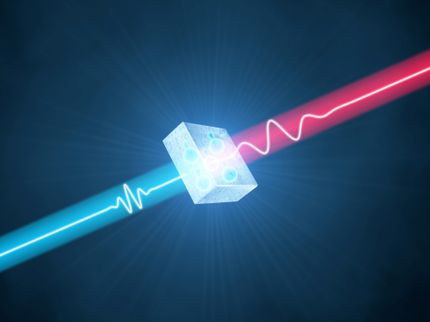Diagnosis just a breath away with new laser
University of Adelaide physics researchers have developed a new type of laser that will enable exciting new advances in areas as diverse as breath analysis for disease diagnosis and remote sensing of critical greenhouse gases.
Published in the journal Optics Letters, the researchers from the University's Institute for Photonics and Advanced Sensing and the School of Chemistry and Physics describe how they have been able to produce 25 times more light emission than other lasers operating at a similar wavelength – opening the way for detection of very low concentrations of gases.
"This laser has significantly more power and is much more efficient than other lasers operating in this frequency range," says Ori Henderson-Sapir, PhD researcher. "Using a novel approach, we've been able to overcome the significant technical hurdles that have prevented fibre lasers from producing sufficient power in the mid-infrared."
The new laser operates in the mid-infrared frequency range – the same wavelength band where many important hydrocarbon gases absorb light.
"Probing this region of the electromagnetic spectrum, with the high power we've achieved, means we will be able to detect these gases with a high degree of sensitivity," says Project Leader Dr David Ottaway. "For instance, it should enable the possibility of analysing trace gases in exhaled breath in the doctors' surgery."
Research has shown that with various diseases, minute amounts of gases not normally exhaled can be detected in the breath; for example, acetone can be detected in the breath when someone has diabetes.
Other potential applications include detection in the atmosphere of methane and ethane which are important gases in global warming.
"The main limitation to date with laser detection of these gases has been the lack of suitable light sources that can produce enough energy in this part of the spectrum," says Dr Ottaway. "The few available sources are generally expensive and bulky and, therefore, not suitable for widespread use."
The new laser uses an optical fibre which is easier to work with, less bulky and more portable, and much more cost effective to produce than other types of laser.
The researchers, who also include Jesper Munch, Emeritus Professor of Experimental Physics, reported light emission at 3.6 microns – the deepest mid-infrared emission from a fibre laser operating at room temperature. They have also shown that the laser has the promise of efficient emission across a large wavelength spectrum from 3.3-3.8 micron.
"This means it has incredible potential for scanning for a range of gases with a high level of sensitivity, with great promise as a very useful diagnostic and sensing tool," says Dr Ottaway.
Topics
Organizations
Other news from the department science

Get the analytics and lab tech industry in your inbox
By submitting this form you agree that LUMITOS AG will send you the newsletter(s) selected above by email. Your data will not be passed on to third parties. Your data will be stored and processed in accordance with our data protection regulations. LUMITOS may contact you by email for the purpose of advertising or market and opinion surveys. You can revoke your consent at any time without giving reasons to LUMITOS AG, Ernst-Augustin-Str. 2, 12489 Berlin, Germany or by e-mail at revoke@lumitos.com with effect for the future. In addition, each email contains a link to unsubscribe from the corresponding newsletter.























































